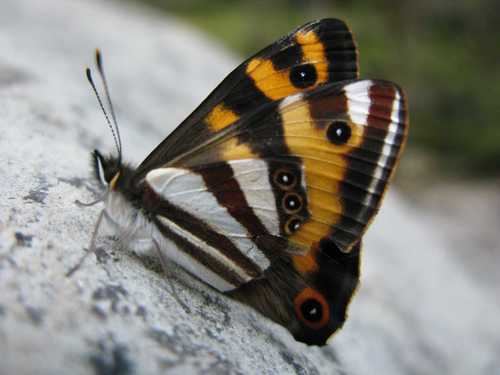Scientific name Dodonidia helmsii Rank Species | Tribe Satyrini Genus DodonidiaButler, 1884 Order Butterflies and moths | |
 | ||
Similar Argyrophenga, Butterflies and moths, Percnodaimon, Argyrophenga antipodum, Lycaena salustius | ||
The forest ringlet butterfly (Dodonidia helmsii), also known as Helms' butterfly, is a rare butterfly of the family Nymphalidae endemic to New Zealand. It is the only species in the genus Dodonidia.
Contents
Taxonomy
The forest ringlet was first described by R. W. Fereday from a specimen collected in the Paparoa Range by a Mr R. Helms of Greymouth. Fereday gave it the specific name helmsi, but would not speculate as to its genus. The species was properly named in 1884 by Arthur G. Butler, who coined the genus Dodonidia, from its resemblance to the Asian Dodona butterflies, and corrected the spelling of the species name to D. Helmsii (now D. helmsii).
Because it was named after Helms, it is properly known as Helms' butterfly, although this is often misspelled as Helm's butterfly. The name forest ringlet is more commonly used.
Ecology
The forest ringlet caterpillar is nocturnal and feeds on "cutty grass" (Gahnia) and bush snowgrass (Chionochloa) from spring to early autumn. Adults live for 3–4 weeks and are fast-flying, found in January and February in clearings or near forest edges, mainly in beech (Nothofagus) forest north of about Lewis Pass.
Conservation
Dodonidia helmsii was once widespread in New Zealand, including the Wellington and Auckland area, but has become significantly rarer over the last 50 years. There are two causes: the increasing rarity in lowland areas of the sedges that are its food plant, and the introduction of predatory wasps to New Zealand that prey on its larvae. Forest ringlets have disappeared from forest below 400 m altitude, but are still found at 600 m or higher, the altitudinal limit for the German and common wasps.
